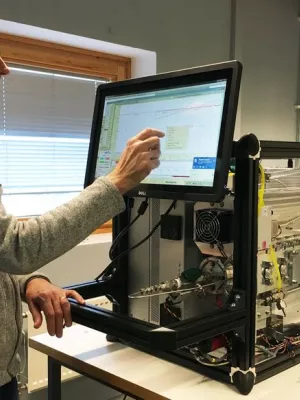
Erik Swietlicki
Professor

Impact of gas-to-particle partitioning approaches on the simulated radiative effects of biogenic secondary organic aerosol
Author
Summary, in English
The oxidation of biogenic volatile organic compounds (BVOCs) gives a range of products, from semi-volatile to extremely low-volatility compounds. To treat the interaction of these secondary organic vapours with the particle phase, global aerosol microphysics models generally use either a thermodynamic partitioning approach (assuming instant equilibrium between semi-volatile oxidation products and the particle phase) or a kinetic approach (accounting for the size dependence of condensation). We show that model treatment of the partitioning of biogenic organic vapours into the particle phase, and consequent distribution of material across the size distribution, controls the magnitude of the first aerosol indirect effect (AIE) due to biogenic secondary organic aerosol (SOA). With a kinetic partitioning approach, SOA is distributed according to the existing condensation sink, enhancing the growth of the smallest particles, i.e. those in the nucleation mode. This process tends to increase cloud droplet number concentrations in the presence of biogenic SOA. By contrast, an approach that distributes SOA according to pre-existing organic mass restricts the growth of the smallest particles, limiting the number that are able to form cloud droplets. With an organically mediated new particle formation mechanism, applying a mass-based rather than a kinetic approach to partitioning reduces our calculated global mean AIE due to biogenic SOA by 24 %. Our results suggest that the mechanisms driving organic partitioning need to be fully understood in order to accurately describe the climatic effects of SOA.
Department/s
- Nuclear physics
- Centre for Environmental and Climate Science (CEC)
- MERGE: ModElling the Regional and Global Earth system
Publishing year
2015
Language
English
Pages
12989-13001
Publication/Series
Atmospheric Chemistry and Physics
Volume
15
Issue
22
Document type
Journal article
Publisher
Copernicus GmbH
Topic
- Meteorology and Atmospheric Sciences
Status
Published
ISBN/ISSN/Other
- ISSN: 1680-7324